Farming has come a long way in recent years, with new technologies and techniques being developed to help farmers increase yields, reduce costs, and improve the overall efficiency of their operations. One of the best promising areas of innovation in this field is greenhouse agriculture, which allows farmers to grow crops in controlled environments protected from the elements and pests. By maximizing greenhouse farming, farmers can increase profits while reducing their environmental impact.
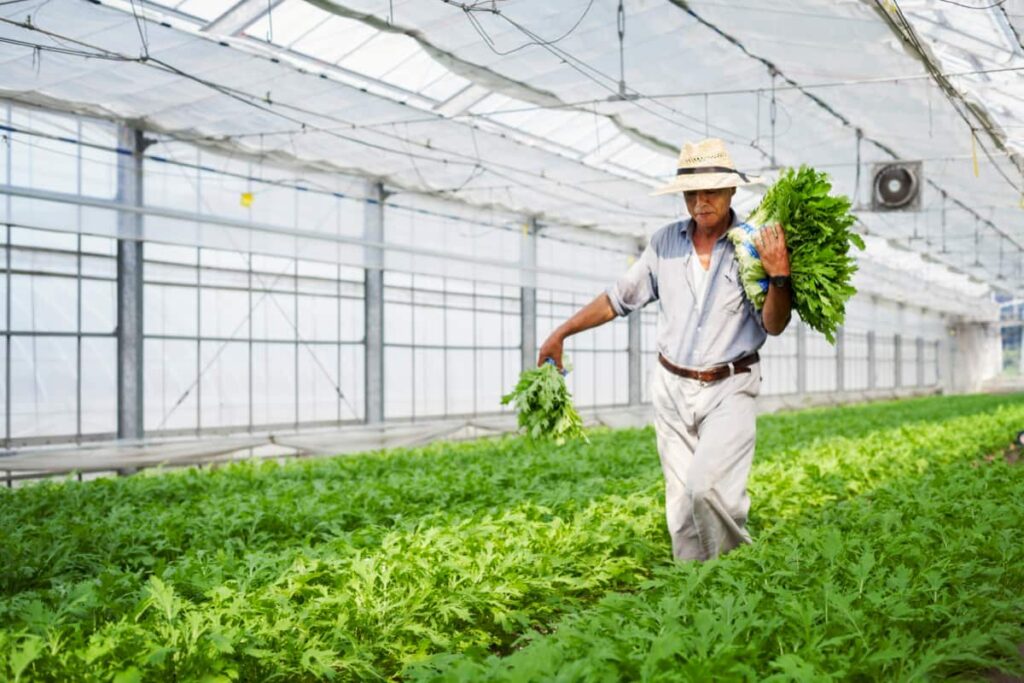
In this blog article post, we will explore the future of farming and how greenhouse agriculture is taking the lead in helping farmers achieve tremendous success and sustainability. We will look at the benefits of greenhouse farming, the technology used, and how farmers can make the most of this innovative approach to agriculture. Whether you’re a farmer or simply interested in learning more about the future of farming, this post will provide valuable insights and information.
How to maximize profit in Greenhouse farming
What is Greenhouse farming?
Greenhouse farming is a method of crop cultivation where plants are grown in controlled environments, typically in a structure made of glass or plastic, to protect them from the elements and pests. The temperature, humidity, light, and other factors, such as nutrients and water, are controlled to provide optimal growing conditions for the plants. Greenhouses allow farmers to extend their growing seasons, produce crops year-round, and improve yields by protecting plants from harsh weather conditions.
In case you missed it: How Do You Grow Cucumbers in a Greenhouse: A Step-by-Step Guide for Beginners
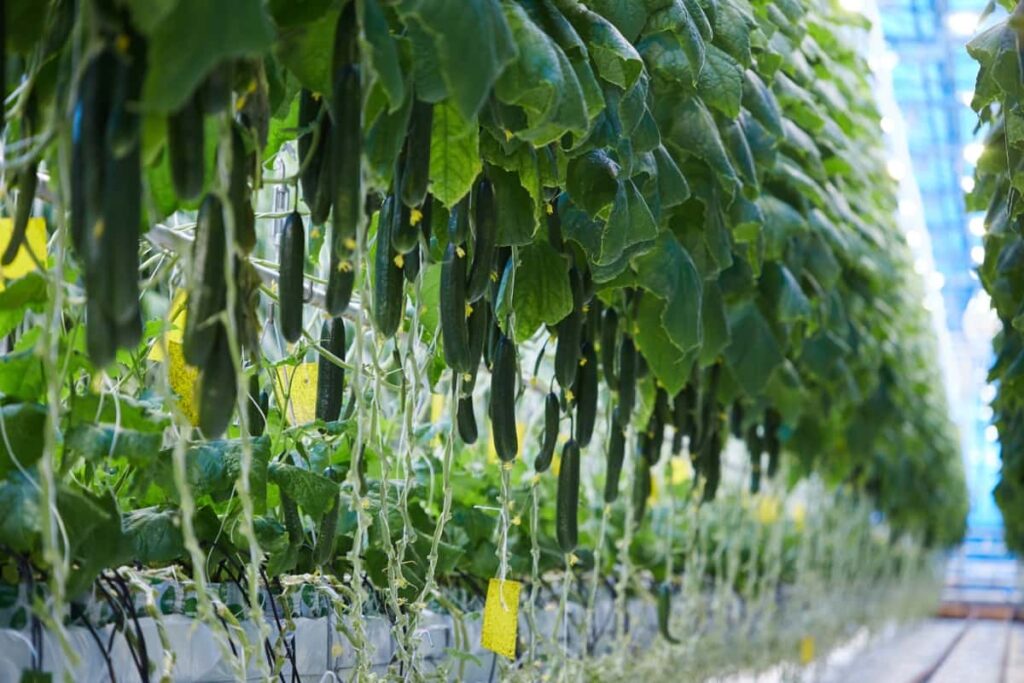
This type of farming also allows for using precision agriculture techniques such as precision irrigation and nutrient management to improve crop health and reduce water and fertilizer usage. Overall, greenhouse farming is a sustainable and efficient way of producing large quantities of food, flowers, and plants.
What are the components of a Greenhouse?
Greenhouses typically comprise several vital components that work together to create the optimal growing environment for plants. These components include:
- The structure: The frame of the Greenhouse, which can be made of aluminum, steel, or wood, supports the covering material (usually plastic or glass) and provides the basic structure of the Greenhouse.
- The covering: The covering material (plastic film or glass) traps heat inside the Greenhouse, creating a warm and humid environment for the plants to grow.
- Heating and cooling systems: Greenhouses often have heating systems, such as propane or natural gas heaters, and cooling systems, such as fans or pad and fan systems, to regulate temperature and humidity inside the Greenhouse.
- Lighting: Greenhouses may also have artificial lighting systems, such as high-intensity discharge lamps or LED lights, to supplement natural light and extend the growing season.
- Irrigation and drainage systems: Greenhouses use irrigation systems to provide water to the plants and drainage systems to remove excess water. Some common irrigation systems used in greenhouses include Drip irrigation systems that deliver water directly to the roots of the plants, reducing water loss and promoting profound root growth. This system is ideal for greenhouse crops that require consistent moisture and is easy to automate. Sprinkler irrigation systems distribute water through a network of pipes and sprinklers, which can be adjusted to match the specific needs of the crops. This system is ideal for greenhouse crops that require high humidity.
- Environmental control systems: These systems, such as temperature and humidity sensors, CO2 injection systems, and shading systems, are used to examine, monitor, and control the environment inside the Greenhouse.
- Pest and disease management: Greenhouses may also have integrated pest and disease management systems, such as Light traps, Sticky traps, biological control methods, and chemical treatments, to protect plants from pests and diseases.
- Automation and control systems: Many modern greenhouses are equipped with automation and control systems that allow farmers to monitor and adjust various environmental conditions in real-time using a computer or mobile devices.
In case you missed it: Farming Business Plan PDF: for Poultry, Livestock, Agriculture, Horticulture, Greenhouse, and Hydroponic
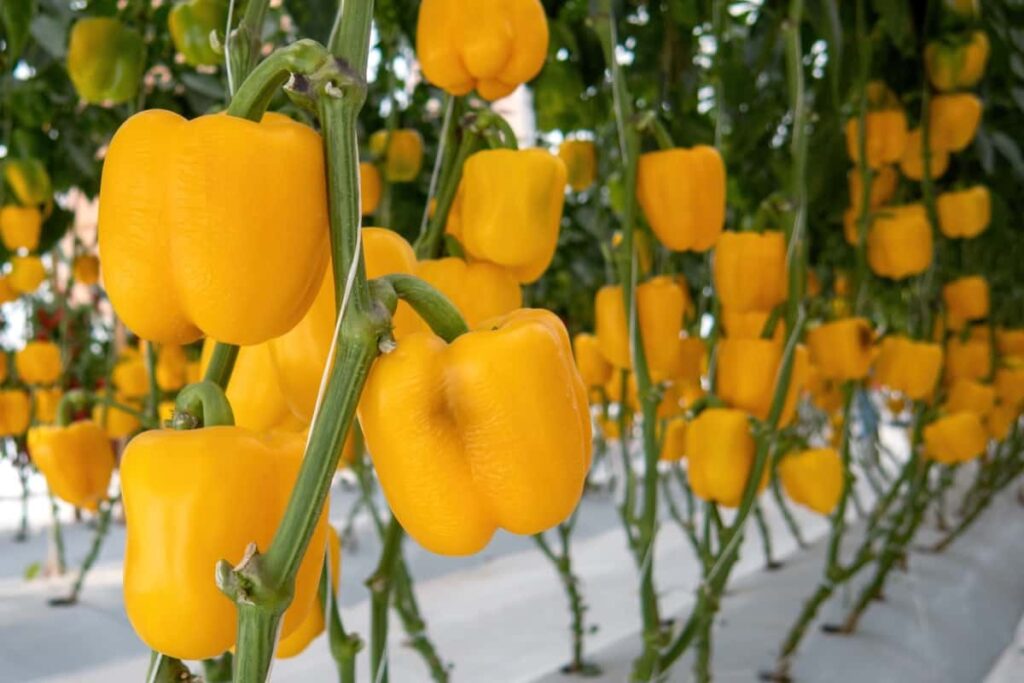
Types of Greenhouse
Based on shape
- Gable greenhouses: These have a peaked roof and are the most common type of Greenhouse. It is also known as post-and-rafter models. This design is popular because it allows for maximum headroom and interior space, and it also allows for good natural ventilation.
- Lean-to greenhouses: These greenhouses are attached to an existing structure, such as a house or barn, and have a sloping roof.
- Sawtooth greenhouses: These have a series of skylights along one side of the roof to provide natural light.
- Quonset greenhouses: These have curved roof and are known for their durability and low cost.
- Dome greenhouses: These have a rounded shape, or Dome shape, and can be made from various materials, such as plastic, polyvinyl, or glass.
Based on size
- Small greenhouses are typically less than 100 square feet and are suitable for home gardeners or small-scale growers.
- Medium greenhouses range from 100 to 1000 square feet and are suitable for small-scale commercial growers.
- Large greenhouses are over 1000 square feet and are typically used for commercial production.
In case you missed it: How to Start Microgreens Vertical Farming: For Indoors, Greenhouse, Growing Tips, Cost, and Benefits
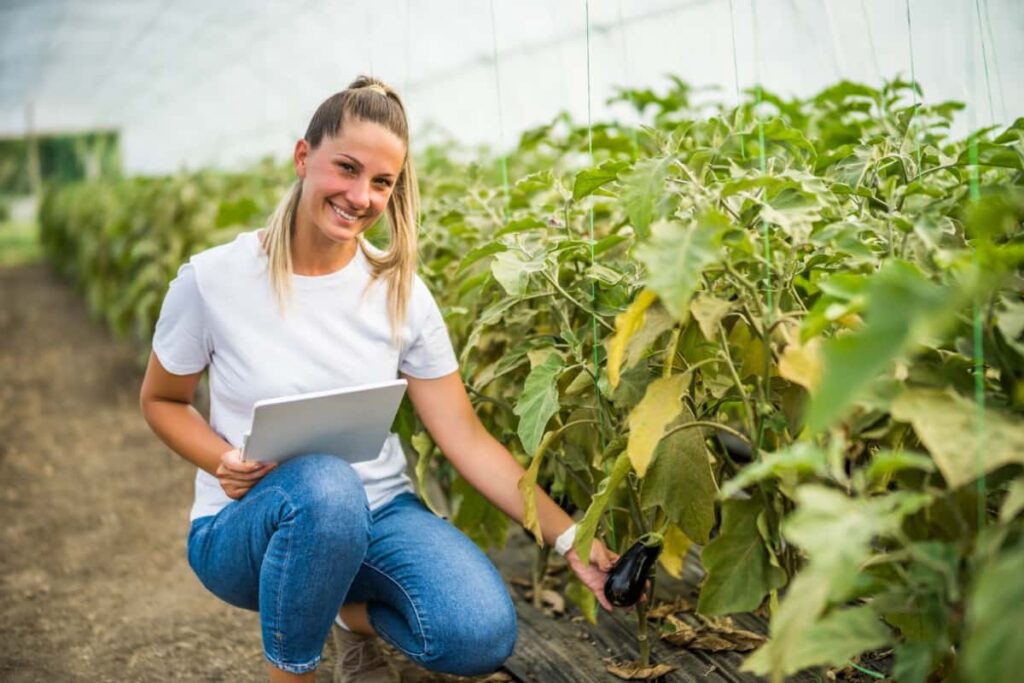
Based on the technology used
- Passive greenhouses rely on natural heat and light to maintain optimal growing conditions.
- Active greenhouses use technology such as heating, ventilation, and lighting systems to control the environment.
- Hybrid greenhouses use a combination of passive and active systems to maintain optimal growing conditions.
Based on the covering material
- Glass greenhouses: These use glass panes to trap heat and light and are known for their durability and clarity.
- Plastic greenhouses: These use plastic film or Polyvinyl sheets to trap heat and light and are known for their affordability and ease of installation.
- Fabric greenhouses: These use fabric covers to trap heat and light and are known for their portability and flexibility.
Crop suitable for Greenhouse farming
Crops which are Highly profitable enterprises due to the high market demand for many greenhouse-grown crops, such as floriculture crops and vegetables. The demand for cut flowers such as Gerbera, Dutch rose, carnation, lily, orchids, gypsophila, Limonium, and Alstroemeria are all popular floriculture crops well-suited for greenhouse cultivation.
And vegetables like color capsicum, tomato, cucumber, and exotic vegetables are increasing daily, making them a promising investment area. In addition to these crops, other essential vegetables and fruits suitable for greenhouse farming include leafy greens, spinach, cucumbers, peppers, tomatoes, Swiss chard, squash, lemons, oranges, grapes, and cilantro. These crops can be grown year-round in a controlled environment, providing farmers with a consistent supply of fresh produce and a sustainable source of income.
In case you missed it: Sorghum Farming in Indonesia: Step-By-Step Cultivation and Production Management
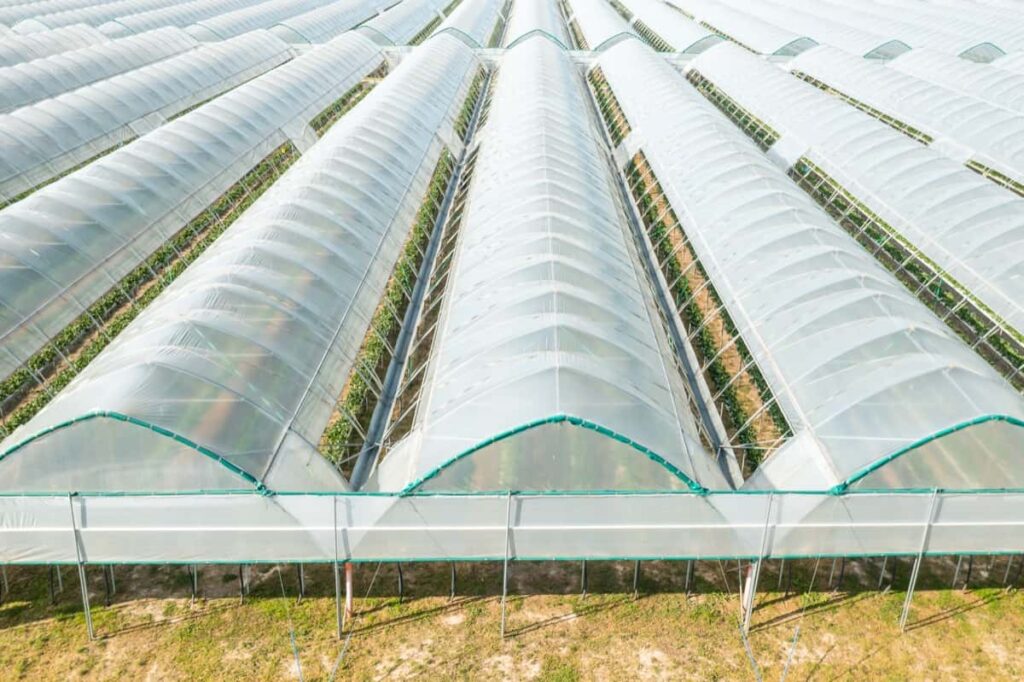
Benefits of Greenhouse farming
- Increased yields: By controlling the environment inside the Greenhouse, farmers can create ideal crop growing conditions, leading to increased yields and higher crop quality.
- Extended growing season: Greenhouses allow farmers to extend their growing seasons, which means they can grow crops year-round and increase their overall crop production.
- Protection from pests and extreme weather: Greenhouses protect crops from harsh weather conditions and pests, which can reduce crop loss and improve crop quality.
- Reduced water usage: Greenhouses allow farmers to use precision irrigation systems, saving water and reducing water usage.
- Increased energy efficiency: Greenhouses can be designed to maximize energy efficiency, reducing energy costs and reducing the environmental impact of farming.
- Increased control over the environment: Greenhouses allow farmers to control temperature, humidity, light, and other environmental factors, which can create optimal growing conditions for their crops.
- Increased automation: Greenhouses can be automated so that farmers can monitor and control environmental conditions remotely.
- Increased flexibility: Greenhouses can grow various crops, including fruits, vegetables, flowers, and ornamental plants.
- Increased profitability: By increasing yields and reducing costs, greenhouse farming can improve the profitability of a farming operation.
- Urban and small farm friendly: Greenhouses can be built in small spaces and urban areas, allowing people to grow their food in limited spaces.
Additional advantages of Greenhouse farming
- Reduced labor costs: Greenhouses can be automated, reducing labor costs and increasing efficiency.
- Increased food safety: Greenhouses can be designed to minimize the risk of contamination from pests and diseases, which can improve the safety of the food produced.
- Increased food security: Greenhouses can produce food in areas where traditional outdoor agriculture is impossible due to harsh weather conditions or lack of arable land.
- Increased sustainability: Greenhouses can be designed to minimize their environmental impact and conserve resources, such as water and energy.
- Increased income: Greenhouses can produce high-value crops, such as organic fruits and vegetables, which can fetch premium prices and increase farmers’ income.
In case you missed it: How to Grow Tomatoes in Australia from Seed: Best Time to Plant in Pots, the Backyard at Home for Sydney, Melbourne, and Victoria
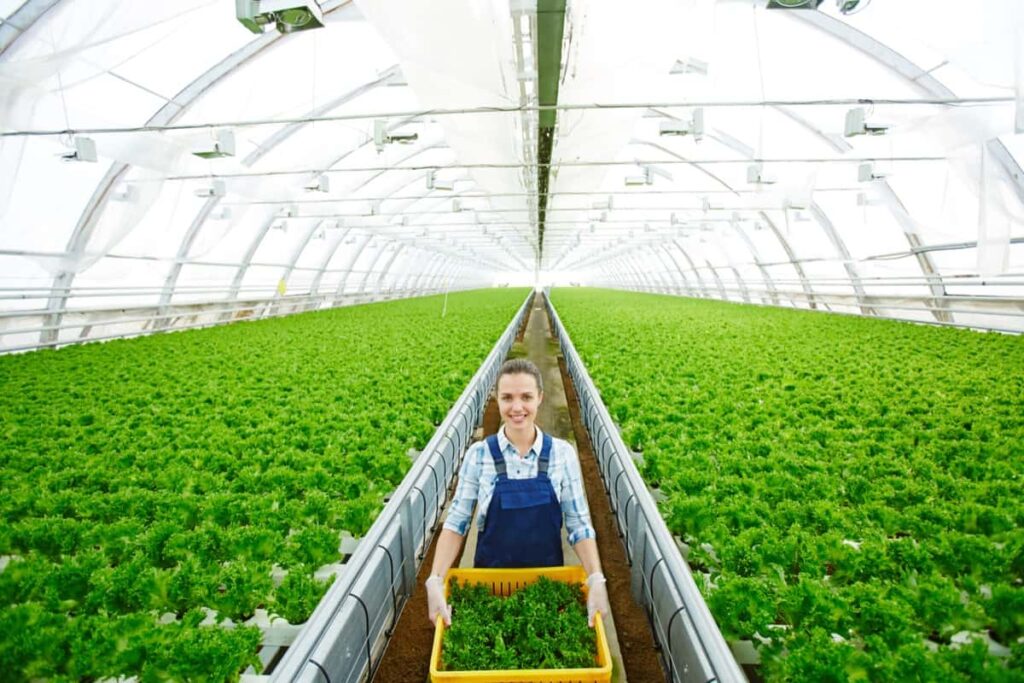
The technology used in Greenhouse farming
Greenhouse farming is growing plants in a controlled environment, typically using plastic or glass structures to trap heat and sunlight. The technology used in greenhouse farming includes various tools and systems to manage the environment and optimize plant growth. One of the critical technologies used in greenhouse farming is climate control. It includes heating, ventilation, and air conditioning systems to maintain plants’ optimal temperature and humidity levels.
Greenhouses also use systems for irrigation and fertilization to provide plants with the necessary water and nutrients for growth. Another important technology used in greenhouse farming is lighting. Many greenhouses use high-intensity discharge (HID) lamps or LED lights to supplement natural sunlight and provide plants with the light they need for photosynthesis. These lights can also extend the growing season and increase crop yields.
Greenhouse farming also utilizes data collection and analysis tools to optimize growth. Sensors and monitoring systems can collect data on temperature, humidity, light levels, and other environmental factors. This data can be analyzed to identify trends and adjust the greenhouse environment to improve plant growth.
In addition, precision agriculture technologies such as drones, remote sensing, and precision irrigation systems have optimized crop growth, yield, and quality. Data generated by these technologies can be used to plan and manage crop growth, monitor crop health, and improve crop yields. These technologies help farmers to grow crops year-round, regardless of weather conditions, and ensure high-quality products for consumers.
Greenhouse subsidy
Greenhouse subsidies refer to financial assistance provided by the government to farmers and businesses to help them establish and maintain greenhouses. The subsidies may be in grants, loans, or tax breaks. The purpose of greenhouse subsidies is to encourage the adoption of greenhouse farming and to help farmers and businesses overcome the high costs associated with building and maintaining a greenhouse.
Greenhouse subsidies are provided by different government agencies and organizations in different countries, and the specific terms and conditions of the subsidies vary. In some cases, subsidies may be available only to farmers or businesses that meet specific criteria, such as farming a particular crop type or using a specific technology. The government subsidizes the greenhouse project cost by 50% to 60%. The percentage of subsidies varies by state.
In India, the National Horticulture Board (NHB) provides financial assistance to farmers and entrepreneurs to construct polyhouses/greenhouses and other protected cultivation structures. The scheme is implemented through State Horticulture Departments/ State Horticulture Corporations, and the subsidy provided is based on the crop type and the greenhouse area. For more information on subsidies, contact NHB. In addition to government subsidies, there may also be private organizations and foundations that provide funding and assistance for greenhouse projects.
In case you missed it: Growing Potatoes Organically in Uttar Pradesh: Varieties, Cultivation Practices, and Production Management
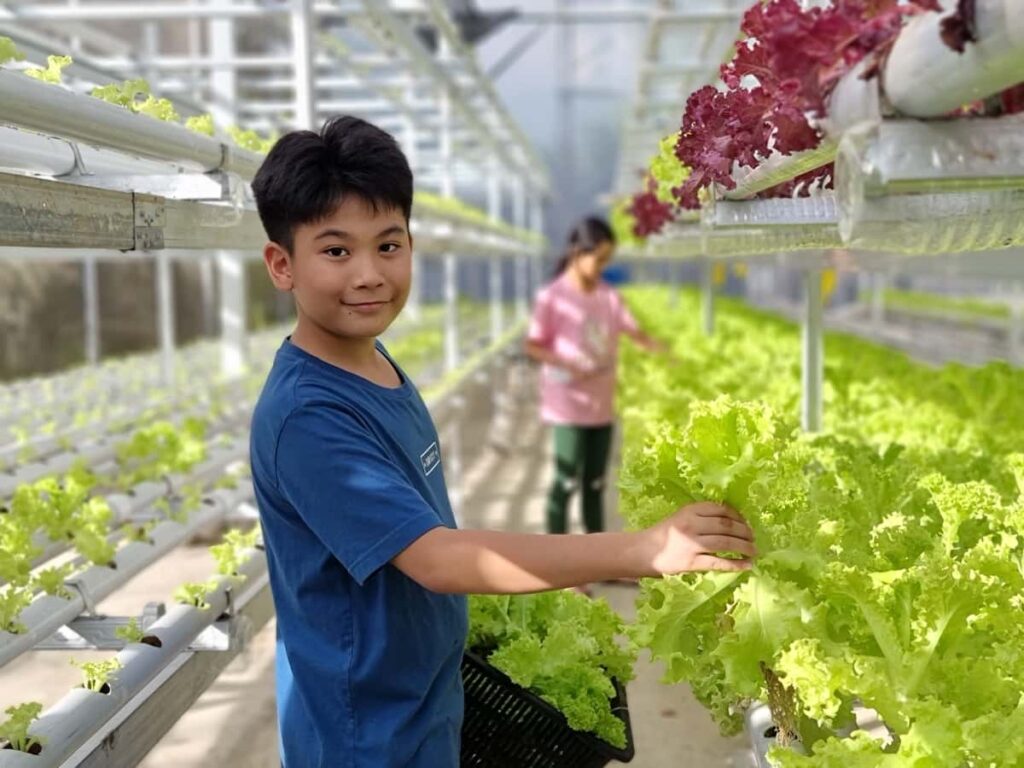
Cost per square meter of Greenhouse based on types
| Type of Greenhouse | Cost per m2 |
|---|---|
| Low-cost (no fan or pad) | Rs. 300-500 |
| Medium-cost (pad and fan system) | Rs. 800-1100 |
| High-cost (fully automated) | Rs. 2000-3500 |
Depending on factors such as location, size of the greenhouse, and the specific materials and technology used. Additionally, these costs do not consider other expenses such as labor, electricity, and maintenance. It’s also important to remember that while the initial investment in a greenhouse may be high, the long-term benefits of increased crop yields and reduced water usage can offset these costs.
The future of farming in a Greenhouse is maximizing profit
The future of farming in greenhouses is expected to focus on maximizing profits through the use of advanced technology and techniques. It includes using precision agriculture, automation, and data analytics to optimize crop yields, reduce costs, and improve efficiency. Additionally, there is an increasing trend toward using hydroponics and aquaponics, which allow for the growth of crops in a controlled environment without the need for soil.
It can lead to higher crop yields and reduced water usage. Additionally, there is a growing interest in using greenhouses for vertical farming, which allows for the cultivation of crops in stacked layers, thereby increasing the amount of land used for farming. Overall, the use of greenhouses has the potential to revolutionize the way we grow food and help to meet the increasing demand for fresh produce.
In case you missed it: 10 Best Reasons to Use Diatomaceous Earth in Your Garden: Benefits, Uses, and Composition

Conclusion
Greenhouse agriculture is poised to take the lead in the future of farming. With its ability to control the environment and increase yields, greenhouse farming can help farmers maximize their profits while reducing resource use. As technology advances and the demand for sustainable and locally-sourced food continues to grow, greenhouse agriculture will become an increasingly viable option for farmers looking to stay competitive. Investing in a greenhouse operation now can help farmers stay ahead of the curve and secure a profitable future in the agriculture industry.
- Sheep Farming Business Plan for Beginners
- Aquaponic Farming at Home: A Step-By-Step Guide
- Profitable Village Farming Business Ideas in 2024
- High-Yield Aquaculture: Fast-Growing Fish for Farming
- Effective Fish Pond Construction Techniques for Beginners
- Irrigation and Water Management in Pineapple Farming
- Blossom to Harvest: Mastering Flowering and Pollination in Papaya Farming
- Pig Fattening Essentials: From Selection to Sale for Beginners
- Raising Wagyu Cattle: A Complete Guide for Premium Beef Production
- Soil Types and Their Water Holding Capacity
- Optimizing Irrigation Schedules for Coconut Groves for Enhanced Yield
- Espresso Your Garden: Coffee Grounds for Healthier Acid-Loving Plants
- The Best Soil Mix for Snake Plants: How to Mix Your Own Snake Plant Soil
- Green Thumb Success: Expert Tips for Cultivating Greenhouse Beans All Year Round
- Bloom All Year Round: The Ultimate Guide to Indoor Hyacinth Care
- Eco-Friendly Gardening: How to Make Liquid Fertilizer from Kitchen Waste
- Ultimate Guide to Grow Anise in Pots: Explore Seed Propagation to Harvesting
- Guide to Raising Chester White Pigs: Discover Breed Facts to Growth Management
- Mastering the Elegance: The Ultimate Guide to Weeping Cherry Tree Care, Planting, and Maintenance
- Ultimate Guide to Planting Garlic in Grow Bags: Growing Strategies for Beginners
- How to Fix Spider Plant Leaf-Related Problems: Natural and Organic Remedies
- 10 Reasons Why Your Tulsi Plant is Shedding Leaves: Home Remedies and Solutions
- Optimizing Growth and Yield: The Advantages of Palm Bunch Ash Fertilizer
- Utilizing Neem Oil Extract as a Natural Pesticide for Hydrangea
- From Soil to Harvest: Various Ways in Which Farmers Can Use AI Tools
- Steps to Encourage and Induce Citrus Flowers: A Comprehensive Guide
- How to Fix Snake Plant Leaf-Related Issues: Natural and Organic Remedies
- Transform Your Garden into a Fragrant Oasis with Raat Ki Rani (Night Blooming Jasmine)
- Discover the Ideal Chicken Breeds for Philippine Farms
- How to Create a Poultry Egg Farm Business Plan for Profits
- Grow Lemon Cucumbers Like a Pro: Insider Techniques for Bountiful Yields
- Ultimate Guide to Caring for Your Pink Princess Philodendron: Tips for Thriving Variegation
- Areca Nut Profit Per Acre: Calculating Yield and Cost of Cultivation
- How Kaveri Chicken is Becoming a More Profitable Breed in Indian Backyards
- Transform Your Barn: 9 Steps to Convert a Horse Stall into a Chicken Coop
- Exploring Suffolk Sheep Disadvantages with Limitations and Challenges
